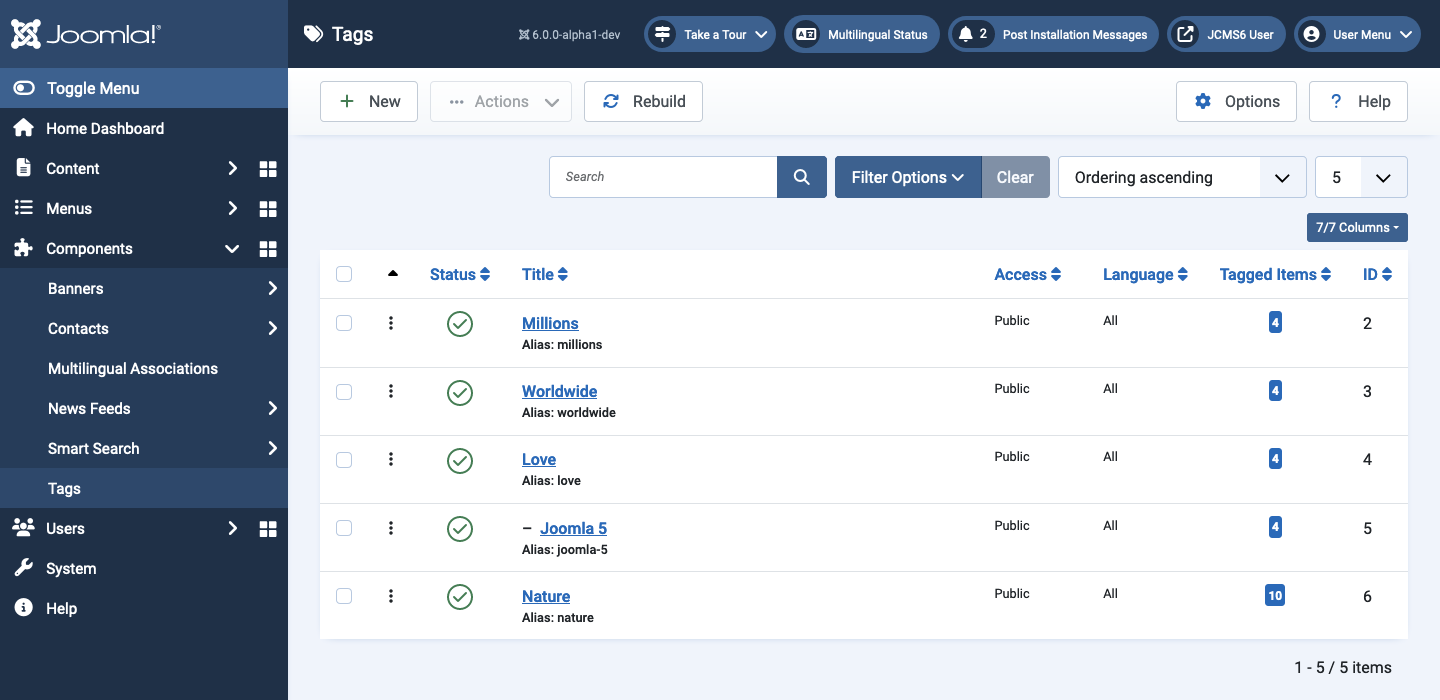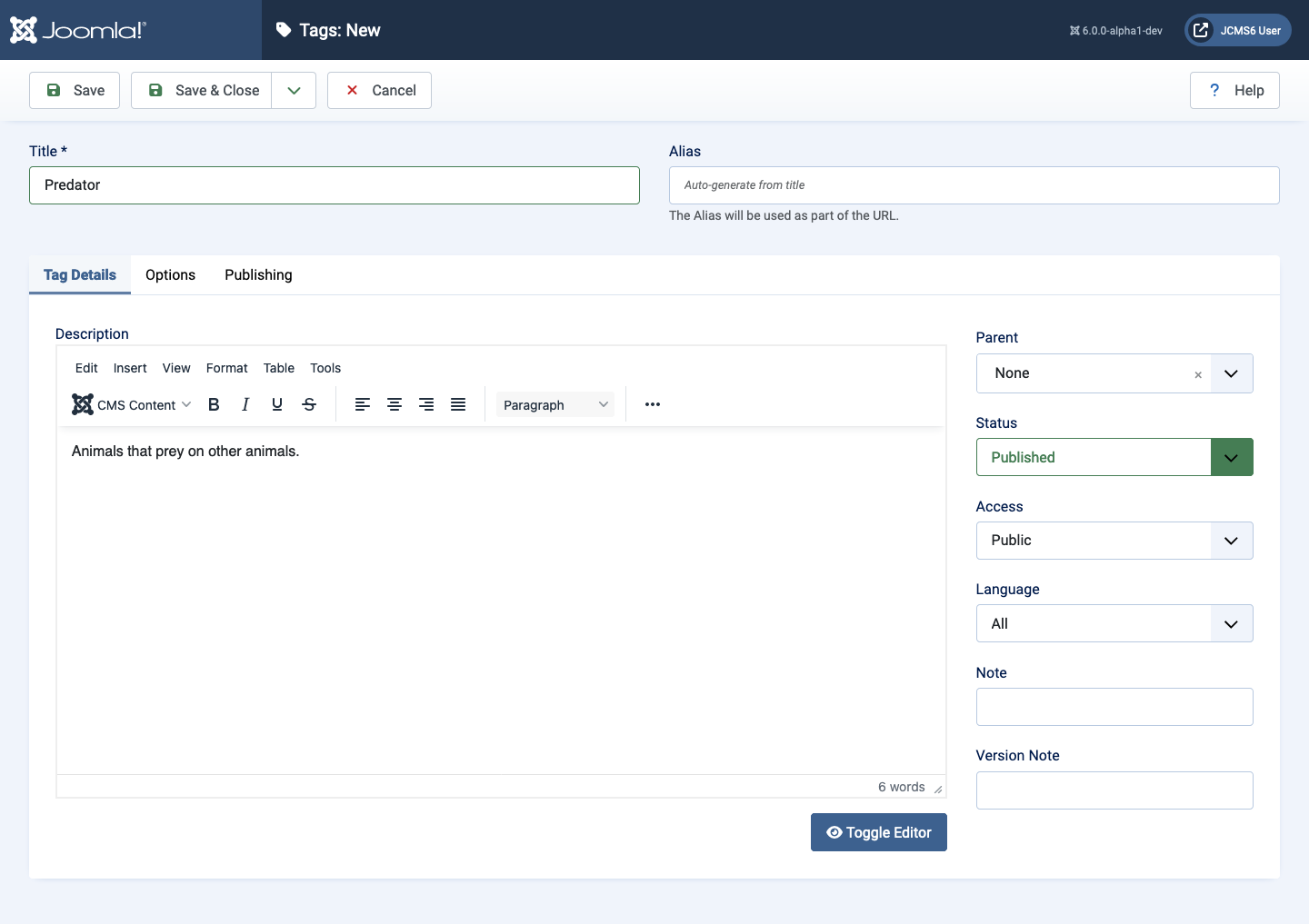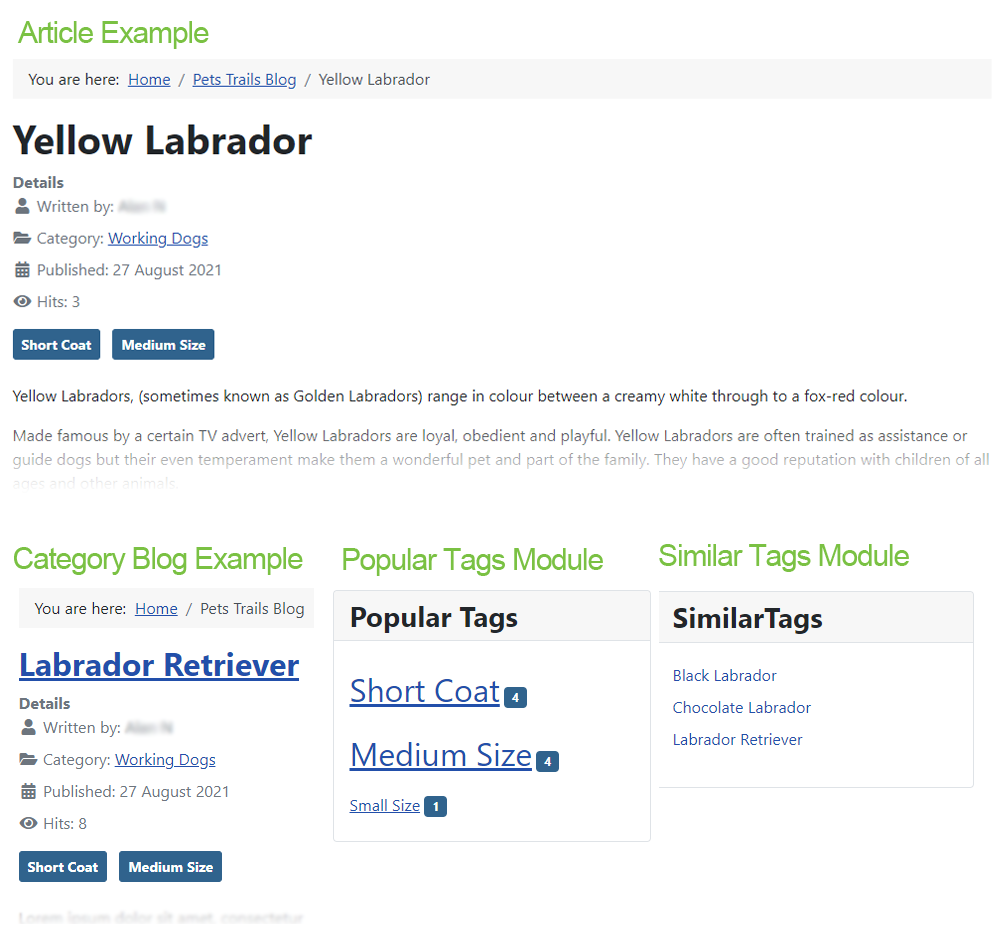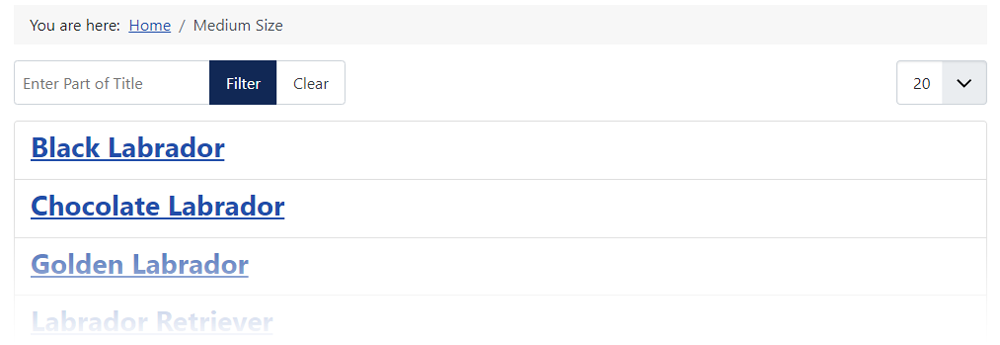Joomla User Manual
Manual Index
Content Tags
Introduction
Tags provide an easy to use and efficient way to organise and display content.
The Tags Component allows tags to be used across different content types
including articles, categories, contacts and newsfeeds. It also provides for
creation of parent and child tags.
Unlike Joomla Categories, where only one category can be assigned to an item, multiple tags may be assigned to a single item but it is not a requirement to assign tags to items.
Once an item is tagged with a specific tag, clicking the tag button on content displaying tags will take you to a page that displays a list of all items that have been tagged with that particular tag. For this reason, tags are often used as a way to present filtered lists of content.
Tags can be added in several places, giving flexibility in tag creation.
Considerations
Before starting, consider the purpose of tags on the website, especially if others will be adding content. Unless they are added and managed correctly, tags can become counter productive. Common problems include content writers adding new unnecessary tags and miss-spelled tag names. Some Site Administrators may choose to change Access permissions so that only specific users can add new tags.
When tags are created they will display as links in the tagged items.
The tag styles and positions are defined by the site template. They are often
styled as buttons or labels.
Tag display may be turned off! This may seem illogical but it is a useful feature where tags are used, for example, to filter content for specific use cases.
The Tags List
- Select Components → Tags from the Administrator menu.

However tags are created, they can be found in this list.
Adding Tags
Via the Tags List
Select the New button in the Tags list Toolbar.

- Title This is the only required field.
- Alias This is created from the Title on save.
- Description It is always best to add a Description. It is displayed in Administrator forms and can be helpful when a lot of tags are in use.
- Parent Leave set to None id this is a root parent tag. Or choose a parent tag from the list if this is a child tag.
- Status This field is set to Published by default. It can be set to Unpublished, Archived or Trashed.
- Access The Access level is Public by default.
- Note and Version Note: If required you can add notes.
- Save & Close The new tag will appear in the Tags List. If you are creating multiple tags you can choose to click Save & New instead to create another.
Once saved the tag will be available for use across the various content types that use them.
From within an Article
It is possible to add new tags whilst creating or editing an article. In the article Content tab Tags Field enter the name of the new tag and press Enter to save and assign the tag to the article.
From within a Category
Tags can be added when creating or editing category. In the Category tab enter the tag name in the Tags Field and press Enter to create and assign the new tag.
From within a Contact
Tags can be added when creating or editing a Contact. In the New/Edit Contact tab enter the tag name in the Tags Field and press Enter to create and assign the new tag. You can also add new tags when creating Contact Categories.
From within a Newsfeed
Tags can be added when creating or editing a new Newsfeed. In the New/Edit News Feed tab enter the tag name in the Tags Field and press Enter to create and assign the new tag. You can also add new tags when creating Newsfeed Categories.
Managing Tags
Wherever you add new Tags within Joomla, they will all appear in the Tags list. Use the Tags list to find, open and adjust tag settings.
The Tags List Filter

You can manipulate the list in a number of ways:
- Search for a tag by using some or all of its title in the Search field.
- Reorder the list using drag and drop to optimise the output order.
- Publish or Unpublish tags using the button in the Status column.
- Select one or more tags and use the Actions button to Publish, Unpublish, Archive, Check-in or Trash the selected tags.
- Select one or more tags and use the Actions → Batch button to set the Language or Access Level.
Tag Settings
- Select a tag Title to make changes to a its settings.
In the tag Edit form:
- The Tag Details tab settings were covered above.
- The Options tab:
- Change the layout of the tag's page (the page that appears when you click on the tag link - for example, mysite.com/tags/my-tag). This layout is normally the default setting and template dependant.
- Add a CSS Class to apply a different style (appearance) to the link for the tag. This would normally only be used by the Site Administrator.
- Set images for the tag - a teaser image for the tag list and/or a full image for the tag page.
- The Publishing tab: Set Metadata for the tag page for Search Engine Optimisation (SEO).
How Joomla Outputs Tags
Once tags have been created on your site they are available for use not only in content but also in some useful modules such as Popular Tags and Similar Tags. The following examples show how these look on a standard installation using the default Cassiopeia Template.

When you click on one of the tags you will be taken to a page that lists all items assigned to that particular tag:

Clicking a tag will take you to a page that outputs a list of all items assigned with that particular tag - in effect it is a filtered list of your tagged website content. A filter box is provided to make it easier to find items as the list grows. You can also set the number of results you want to see in a single view.
Tags Configuration
Individual tags inherit settings from the Tags component options. It is covered in a separate tutorial. [ToDo] Select the Options button in the Tags list page Toolbar.
Tags Component configuration can be overridden at menu item level.
Tips
- Remember that Tags are used across multiple content types
- You can add more than one Tag to an item
- Use the Help button when unsure